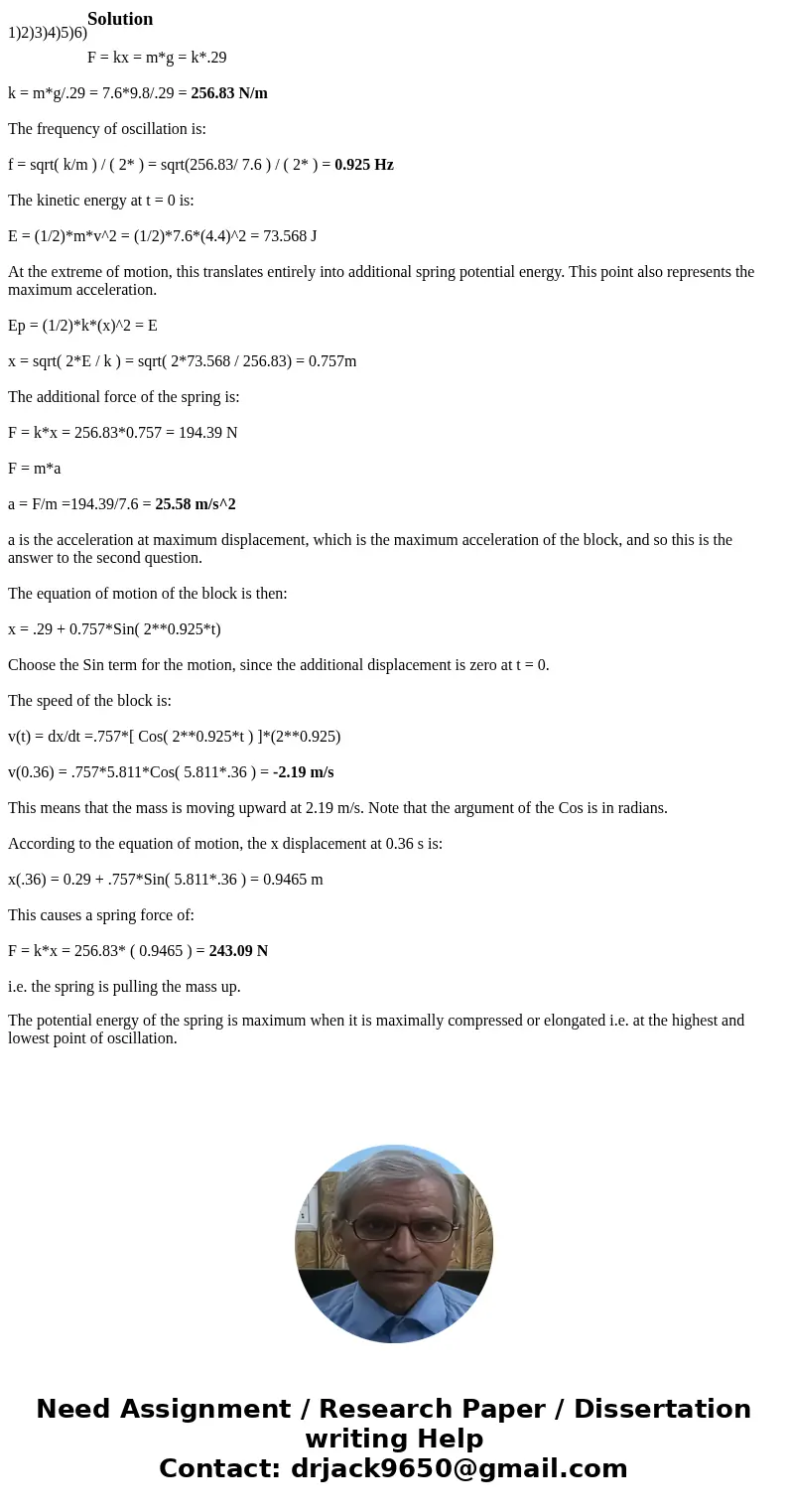1 2 3 4 5 6SolutionF kx mg k29 k mg29 769829 25683 Nm
1)
2)
3)
4)
5)
6)
Solution
F = kx = m*g = k*.29
k = m*g/.29 = 7.6*9.8/.29 = 256.83 N/m
The frequency of oscillation is:
f = sqrt( k/m ) / ( 2* ) = sqrt(256.83/ 7.6 ) / ( 2* ) = 0.925 Hz
The kinetic energy at t = 0 is:
E = (1/2)*m*v^2 = (1/2)*7.6*(4.4)^2 = 73.568 J
At the extreme of motion, this translates entirely into additional spring potential energy. This point also represents the maximum acceleration.
Ep = (1/2)*k*(x)^2 = E
x = sqrt( 2*E / k ) = sqrt( 2*73.568 / 256.83) = 0.757m
The additional force of the spring is:
F = k*x = 256.83*0.757 = 194.39 N
F = m*a
a = F/m =194.39/7.6 = 25.58 m/s^2
a is the acceleration at maximum displacement, which is the maximum acceleration of the block, and so this is the answer to the second question.
The equation of motion of the block is then:
x = .29 + 0.757*Sin( 2**0.925*t)
Choose the Sin term for the motion, since the additional displacement is zero at t = 0.
The speed of the block is:
v(t) = dx/dt =.757*[ Cos( 2**0.925*t ) ]*(2**0.925)
v(0.36) = .757*5.811*Cos( 5.811*.36 ) = -2.19 m/s
This means that the mass is moving upward at 2.19 m/s. Note that the argument of the Cos is in radians.
According to the equation of motion, the x displacement at 0.36 s is:
x(.36) = 0.29 + .757*Sin( 5.811*.36 ) = 0.9465 m
This causes a spring force of:
F = k*x = 256.83* ( 0.9465 ) = 243.09 N
i.e. the spring is pulling the mass up.
The potential energy of the spring is maximum when it is maximally compressed or elongated i.e. at the highest and lowest point of oscillation.

 Homework Sourse
Homework Sourse